Disentangled Information Bottleneck
PyTorch code for "Disentangled Information Bottleneck".
Paper Link: [arXiv]
Experiments
Hardware & Software Dependency
-
Hardware
We use a machine with AMD Ryzen 7 3700X CPU, 32GB RAM, and NVIDIA RTX2070S with 8GB graphics memory.
-
Software
We use Windows 10 platform with Python 3.7 and CUDA 10.1.
For all dependent libraries, please refer to
requirements.txt.
Installation
-
Clone this repository.
git clone https://github.com/PanZiqiAI/disentangled-information-bottleneck.git -
Create python environment and install dependent libraries via
pip.pip install -r requirements.txt
Training & Evaluation
Quantitative metrics
We compare our method to IB Lagrangian in terms of information compression, generalization, robustness to adversarial attack, and out-of-distribution detection.
-
Train VIB
python train_lagrangian.py --model=vib --dataset=mnist --lambda_kl=0.01 --desc=quant/mnist/vibBy running this command, a directory
STORAGE/experiments/quant/mnist/vibwill be created, which stores training logs, evaluations on quantitative metrics, and saved checkpoints. Another directorySTORAGE/tensorboard/quant/mnist/vibwill also be created, which stores tensorboardX visualization of training & evaluation data. The following commands are similar. -
Train NIB
python train_lagrangian.py --model=nib --dataset=mnist --lambda_kl=0.01 --desc=quant/mnist/nib -
Train squared-VIB
python train_lagrangian.py --model=vib --hfunc=pow --dataset=mnist --lambda_kl=0.001 --desc=quant/mnist/squared-vib -
Train squared-NIB
python train_lagrangian.py --model=nib --hfunc=pow --dataset=mnist --lambda_kl=0.001 --desc=quant/mnist/squared-nib -
Train DisenIB
python train_disenib.py --dataset=mnist --desc=quant/mnist/disenib
Supervised disentangling
We use convolutional models for the supervised disentangling task.
-
Train on MNIST
python train_disenib_mnist.py --desc=disentangling/mnist/disenib -
Train on Shapes
python train_disenib_shapes.py --desc=disentangling/shapes/disenib -
Train on Sprites
python train_disenib_sprites.py --desc=disentangling/sprites/disenib
Results
Quantitative metrics
Results on MNIST dataset is as follows.
-
Information compression
Table cell entries represent
I(X;T) / I(Y;T).Method VIB NIB squared-VIB squared-NIB DisenIB Training 3.90 / 2.23 2.90 / 2.20 3.62 / 2.22 2.57 / 2.13 2.32 / 2.30 Testing 4.07 / 2.19 2.95 / 2.18 3.77 / 2.18 2.60 / 2.11 2.40 / 2.29 -
Generalization
Method VIB NIB squared-VIB squared-NIB DisenIB Training 99.79 97.53 99.52 95.23 100.0 Testing 97.59 95.39 97.19 93.20 98.57 -
Robustness to adversarial attack
- Training
Method VIB NIB squared-VIB squared-NIB DisenIB ε = 0.1 76.32 73.59 68.56 69.21 97.51 ε = 0.2 23.76 30.65 15.86 31.26 85.25 ε = 0.3 5.12 8.59 2.34 10.81 72.06 - Testing
Method VIB NIB squared-VIB squared-NIB DisenIB ε = 0.1 73.96 72.51 67.32 68.24 93.11 ε = 0.2 24.52 31.92 17.23 31.29 83.09 ε = 0.3 5.06 9.46 2.52 11.26 71.81 -
Out-of-distribution detection
We use Gaussian noise as out-of-distribution data.
Method VIB NIB squared-VIB squared-NIB DisenIB TPR95 22.81 29.35 87.93 43.07 0.00 AUROC 95.70 94.97 55.72 92.60 99.89 AUPR In 96.08 95.71 49.36 93.76 99.88 AUPR Out 94.86 93.84 58.92 90.90 99.88 Detection Err 10.22 11.43 41.69 14.40 1.39
Supervised disentangling
- MNIST
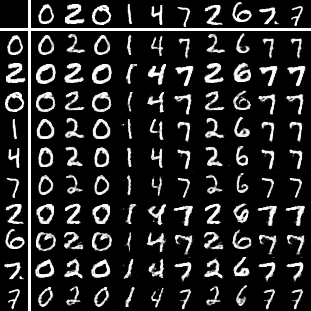 |
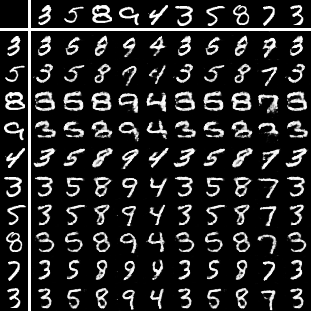 |
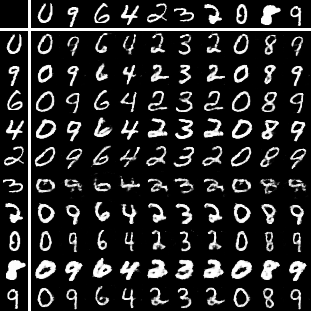 |
- Sprites
- Shapes
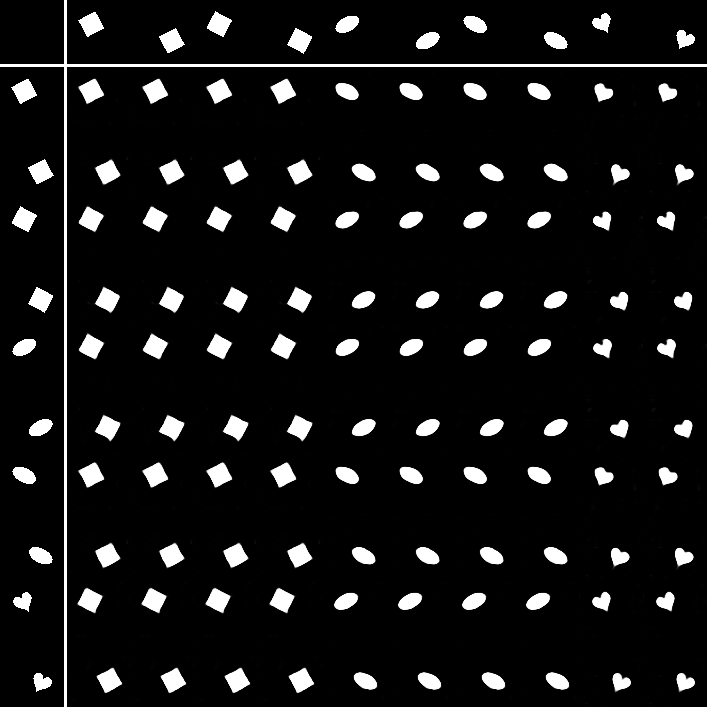 |
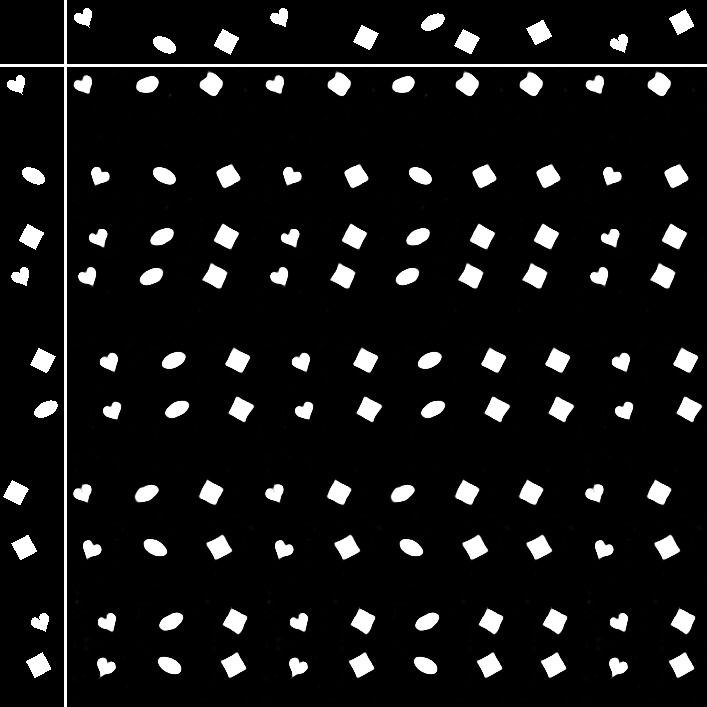 |
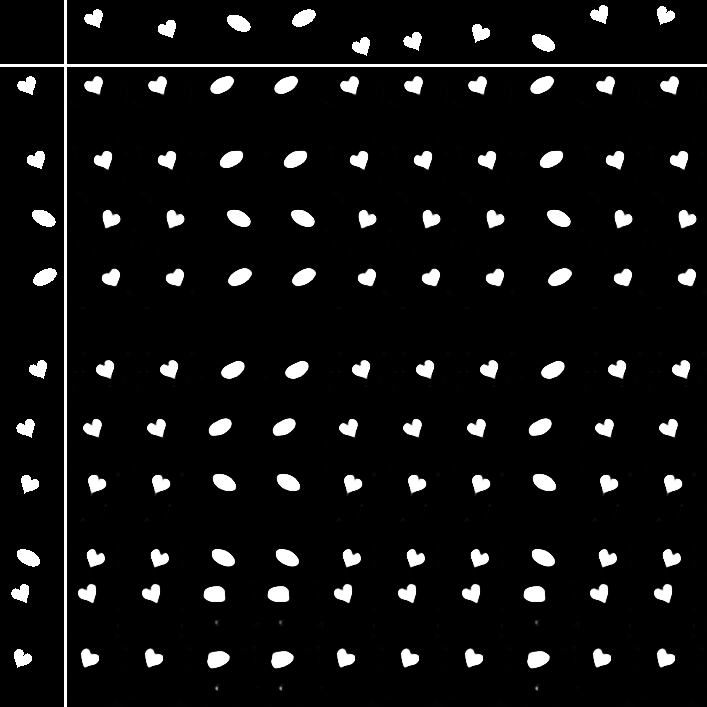 |